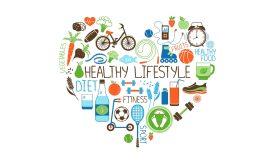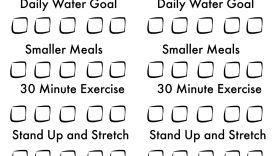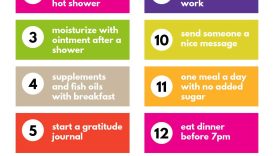Eating Right: A Recipe for a Healthier Life

Importance of Healthy Eating
Healthy eating plays a pivotal role in maintaining overall health and well-being. It’s not just about avoiding junk food or fad diets but rather about making informed choices that nourish the body. Many people often overlook the profound impact that their dietary habits have on their physical and mental health. Adopting a wholesome eating approach can lead to a stronger immune system, better mood, and higher energy levels.
- Eating Right: A Recipe for a Healthier Life
- Importance of Healthy Eating
- Benefits of Eating Right
- Understanding Nutrition
- Macronutrients
- Micronutrients
- Building a Balanced Diet
- Food Groups to Include
- Portion Control
- Meal Planning Tips
- Preparing Healthy Meals
- Snack Ideas
- Grocery Shopping for Nutritious Choices
- Reading Food Labels
- Choosing Fresh Produce
- Cooking Techniques for Healthier Meals
- Grilling and Baking
- Steaming and Sautéing
- Hydration and Its Impact on Health
- Importance of Staying Hydrated
- Best Hydration Practices
- Mindful Eating Habits
- Eating Slowly and Mindfully
- Recognizing Hunger and Fullness Cues
- Healthy Eating on a Budget
- Tips for Affordable Nutrition
- Planning Meals Economically
- Eating Right for Different Dietary Needs
- Vegetarian and Vegan Options
- Catering to Food Allergies and Intolerances
Benefits of Eating Right
Eating right shouldn’t feel like a chore; it can be an enjoyable journey towards a healthier lifestyle. Here are some key benefits to consider:
- Enhanced Energy Levels: Consuming nutrient-dense foods can boost energy and decrease fatigue.
- Weight Management: Making wise food choices helps in maintaining a healthy weight by balancing calorie intake.
- Improved Mental Clarity: A diet rich in omega-3 fatty acids, fruits, and vegetables enhances cognitive function and mood stability.
- Disease Prevention: Eating a variety of foods rich in vitamins and minerals can lower the risk of chronic diseases such as obesity, diabetes, and heart disease.
By recognizing these benefits, individuals can motivate themselves to adopt healthier habits that support long-term wellness.
Understanding Nutrition
Macronutrients
Diving into nutrition, it’s essential to understand macronutrients, which are the building blocks of our diet. These are nutrients that we need in larger quantities to fuel our bodies. There are three primary macronutrients:
- Carbohydrates: Often viewed as the villain in many diets, carbohydrates are actually vital for energy. They are found in foods like fruits, vegetables, whole grains, and legumes.
- Proteins: Crucial for muscle repair and growth, proteins can be sourced from meat, dairy, beans, and nuts. Think of protein as the body’s construction worker, rebuilding and repairing tissues.
- Fats: Healthy fats are not to be avoided; they’re essential for absorbing vitamins and supporting cell growth. Avocados, nuts, and olive oil are excellent choices.
Micronutrients
While macronutrients are important, micronutrients—vitamins, and minerals—play a critical role as well. They support a range of bodily functions, from immune system health to bone strength. Here’s a quick breakdown:
- Vitamins: Often categorized into fat-soluble (A, D, E, K) and water-soluble (B-complex and C), these play various roles in cellular processes.
- Minerals: Essential for bone structure, muscle function, and nerve signaling, minerals like calcium, potassium, and iron must be included in the diet.
Understanding both macronutrients and micronutrients is fundamental for anyone looking to enhance their diet, leading to improved health outcomes and a better quality of life.
Building a Balanced Diet
Food Groups to Include
Creating a well-rounded diet involves incorporating a variety of food groups. Each group offers unique nutrients that are essential for optimal health. Here’s a breakdown of key food groups to consider:
- Fruits: Aim for a colorful mix of fruits, such as berries, oranges, and bananas. They provide vitamins, minerals, and antioxidants.
- Vegetables: Leafy greens, root vegetables, and cruciferous options like broccoli deliver fiber and essential nutrients. Try to fill half your plate with vegetables at each meal!
- Whole Grains: Swap refined grains for whole grains like brown rice, quinoa, and whole-wheat bread. They offer more fiber and nutrients.
- Protein Sources: Include lean meats, fish, beans, and legumes. Each of these foods contributes to muscle repair and energy.
Portion Control
While including a variety of food groups is crucial, portion control is equally important in maintaining a balanced diet. Overeating, even healthy foods, can lead to weight gain and other health issues. Here are some strategies for better portion control:
- Use Smaller Plates: This simple trick can help trick your brain into thinking you’re eating more.
- Practice Mindful Eating: Engage fully while eating, savoring each bite to recognize when you’re satisfied.
- Measure Servings: Take the time to measure out servings, especially for calorie-dense foods.
Finding the right balance ensures that you’re nourishing your body adequately without overindulging. Ultimately, these practices can lead to healthier eating patterns that become second nature.
Meal Planning Tips
Preparing Healthy Meals
Meal planning can be a game-changer for maintaining a balanced diet. It removes the guesswork and helps streamline healthy eating. Start by dedicating a few hours each week to plan your meals. Here are some tips to kickstart your meal prep:
- Choose Recipes Wisely: Look for simple recipes that incorporate multiple food groups, like a quinoa salad with vegetables and grilled chicken.
- Batch Cooking: Prepare larger portions of healthy meals that can be divided into containers for the week. Dishes like soups, stews, or casseroles work wonderfully for this.
- Involve the Family: Get family members involved in the cooking process. Not only does this help you share the workload, but it also teaches everyone the importance of healthy eating.
Snack Ideas
Healthy snacks are essential for sustaining energy levels between meals. They’re also a great opportunity to incorporate more nutrients. Here are some smart snack ideas:
- Nut Butter and Fruit: Apples or bananas paired with almond or peanut butter provide a satisfying blend of carbs and protein.
- Greek Yogurt: Rich in protein, yogurt can be topped with berries or granola for a delicious snack.
- Veggies and Hummus: Carrot sticks, cucumber slices, or bell peppers dipped in hummus make for a crunchy and nutritious treat.
By implementing these meal planning strategies and healthy snack options, individuals can set themselves up for success on their journey to better nutrition.
Grocery Shopping for Nutritious Choices
Reading Food Labels
When grocery shopping, understanding how to read food labels is essential for making informed choices. Labels provide valuable information that can help you navigate the aisles. Here’s what to focus on:
- Serving Size: Check the serving size to understand how much of the product you’re actually consuming. It can be misleading!
- Ingredients List: Look for products with whole food ingredients and minimal additives. If sugar, sodium, or artificial ingredients are high on the list, it might be best to skip it.
- Nutritional Information: Pay attention to key nutrients. Aim for foods low in saturated fats, cholesterol, and sugars, while high in fiber, vitamins, and minerals.
Choosing Fresh Produce
Selecting fresh produce can be one of the most rewarding aspects of grocery shopping. Here are some tips to help ensure you choose the best fruits and vegetables:
- Seasonal Choices: Opt for seasonal fruits and vegetables as they’re likely to be at their peak freshness and flavor. Plus, they often cost less!
- Visual Inspection: Look for vibrant colors and firm textures; avoid produce with bruises or discoloration.
- Try Local: Whenever possible, shop at local farmers’ markets. They often have fresher options than larger supermarkets and support local agriculture.
By mastering these grocery shopping tips, individuals can easily fill their carts with nutritious choices that contribute to a healthier lifestyle.
Cooking Techniques for Healthier Meals
Grilling and Baking
Once you have your nutritious ingredients, the cooking techniques you use can significantly affect the healthiness of your meals. Two of the best methods include grilling and baking.
- Grilling: This method not only adds a delicious smoky flavor but also allows excess fat to drip away from the food. Think about marinating chicken or vegetables and throwing them on a hot grill for a quick, healthy dinner. Grilled veggies like zucchini, bell peppers, and asparagus make excellent side dishes!
- Baking: Baking is a great way to cook foods without added fats. Instead of frying, consider baking fish or chicken with herbs and spices. Roasting vegetables at high temperatures can caramelize their natural sugars, making them incredibly appealing.
Steaming and Sautéing
Another pair of healthy cooking techniques includes steaming and sautéing. Both methods enhance flavors without adding unhealthy fats.
- Steaming: This technique helps retain nutrients that can be lost during boiling. Steaming broccoli, for example, keeps the vibrant green color and crunchy texture, making it a delightful side dish.
- Sautéing: Using a small amount of healthy oil, like olive oil, sautéing allows for quick cooking while preserving the food’s nutrients. Toss together some garlic, spinach, and chickpeas in a pan for a delicious and nutrient-rich meal.
Incorporating these cooking techniques will not only enhance the flavor of your meals but also help maintain their nutritional profile, paving the way for healthier eating habits.
Hydration and Its Impact on Health
Importance of Staying Hydrated
Hydration plays a crucial role in maintaining overall health, yet it’s often overlooked. Water is essential for almost every bodily function, from temperature regulation to nutrient absorption. Staying properly hydrated can lead to better concentration, improved mood, and enhanced physical performance. Consider this: when you’re even slightly dehydrated, you may experience fatigue or headaches. A personal experience illustrates this well—after forgetting to drink enough water during a busy day, I found myself feeling sluggish and unable to focus.
Best Hydration Practices
To ensure you’re adequately hydrated, consider these effective practices:
- Carry a Water Bottle: Having a water bottle on hand encourages regular sipping throughout the day.
- Infuse Your Water: If plain water feels too boring, add slices of fruit, cucumber, or mint for a refreshing twist.
- Set Reminders: Use phone alarms or hydration apps to remind you to drink water regularly.
- Hydrate with Food: Incorporate foods high in water content, such as cucumbers, oranges, and watermelon, into your diet.
By prioritizing hydration through these practices, individuals can foster better health and enhance their overall well-being.
Mindful Eating Habits
Eating Slowly and Mindfully
In our fast-paced world, it’s easy to rush through meals without truly savoring them. This is where mindful eating comes into play. By eating slowly, you allow yourself to relish each bite and enjoy the flavors of your food. I remember a dinner when I decided to put down my fork between bites; it transformed my meal into a delightful experience rather than just a routine. Here are some tips for eating mindfully:
- Eliminate Distractions: Turn off the TV and put away your phone to focus entirely on your food.
- Chew Thoroughly: Aim for at least 20-30 chews per bite to fully appreciate the taste and texture.
- Engage All Senses: Notice the colors, smells, and even sounds of your food, which adds to the enjoyment.
Recognizing Hunger and Fullness Cues
Listening to your body’s hunger and fullness cues is crucial for mindful eating. Many people eat out of habit rather than genuine hunger. To tune into your body, try the following:
- Check In Before Eating: Are you truly hungry, or is it boredom or stress? Reflecting on this can change your eating habits.
- Use a Scale: Rate your hunger and fullness on a scale of 1 to 10. This can help you learn to stop eating when you’re comfortably satisfied rather than overly full.
By adopting these mindful eating habits, individuals can foster a healthier relationship with food and enhance their overall dining experience.
Healthy Eating on a Budget
Tips for Affordable Nutrition
Eating healthy doesn’t have to break the bank, and everyone can enjoy nutritious meals on a budget. One useful tip is to prioritize whole, unprocessed foods over pre-packaged items. Not only are they more affordable, but they also offer better nutritional value. For instance, I found that buying dried beans and cooking them at home is often cheaper and healthier than buying canned versions. Here are some additional strategies:
- Buy in Bulk: Purchase staple items like grains, nuts, and seeds in bulk to save money.
- Frozen Fruits and Vegetables: These can be more affordable and have a longer shelf life without losing nutritional value.
- Seasonal Shopping: Focus on buying fruits and vegetables that are in season to benefit from lower prices.
Planning Meals Economically
Planning meals can be a powerful tool to stay within budget while ensuring healthy eating. Start by creating a weekly menu based on what’s on sale at your local grocery store.
- Make a Shopping List: Stick to it to avoid impulse buys.
- Batch Cooking: Prepare larger portions of meals so you can enjoy leftovers or freeze extras for later.
- Incorporate Versatile Ingredients: Use ingredients like rice or quinoa that can be paired with various proteins and vegetables throughout the week.
By implementing these tips, anyone can successfully navigate healthy eating without overspending, making nutritious food accessible and enjoyable.
Eating Right for Different Dietary Needs
Vegetarian and Vegan Options
Accommodating different dietary preferences, such as vegetarianism and veganism, is becoming increasingly popular and accessible. Whether due to ethical concerns, health reasons, or environmental impacts, plant-based diets can be both fulfilling and nutritious. Personal experience has shown that with a little creativity, vegetarian and vegan meals can be incredibly delicious! Consider these options:
- Protein Sources: Incorporate legumes, lentils, tofu, and tempeh into meals to provide essential protein.
- Whole Grains: Quinoa, brown rice, and farro can serve as hearty bases for various dishes.
- Creative Substitutes: Use cauliflower rice or chickpea pasta for a twist on traditional meals.
Catering to Food Allergies and Intolerances
For those with food allergies or intolerances, eating right requires extra attention. Understanding labels and ingredients is key to avoiding unhealthy reactions. For instance, a friend of mine has a gluten intolerance and has found satisfying alternatives in quinoa and rice-based products. Here are some tips for catering to allergies:
- Always Read Labels: Products can often contain hidden allergens. Look for certifications, like gluten-free or nut-free.
- Experiment with Ingredients: Explore substitutions, such as almond milk for dairy or chickpea flour for wheat flour.
- Plan Meals: Meal prepping specifically for dietary needs can help manage allergies while saving time and hassle.
By embracing these diverse dietary options and mindful practices, everyone can find simple yet satisfying dishes that cater to their unique nutritional needs.




